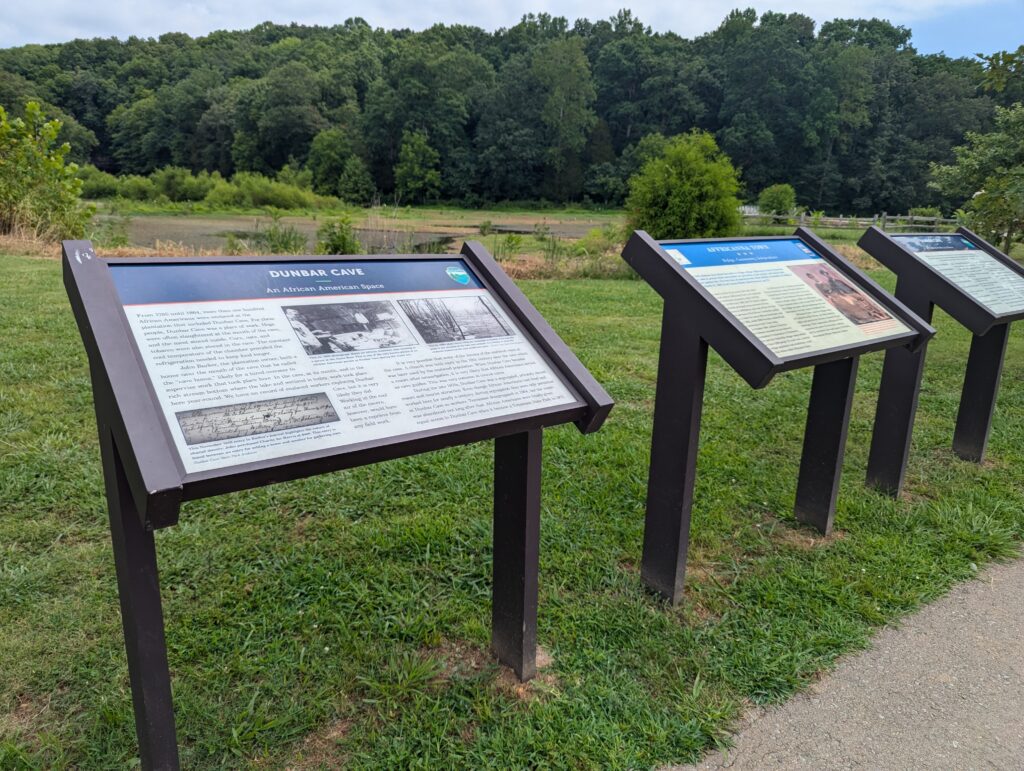Dunbar Cave State Park: Exploring Equitable Futures
Dunbar Cave State Park, located on 144 acres in Clarksville, Tennessee, is a state natural area that includes an eight-mile-long cave with spiritual, historical, archeological, natural, and geological significance. Visitors are allowed to access portions of the cave on group tours. However, the cave is only open from May through September and may close during the season due to flooding. According to Park Manager David Britton, there are additional limitations on who can enter the cave. It is impossible to access in a wheelchair, and visitors who have difficulty standing, are too tall, or are claustrophobic cannot complete the tours.
Technological Solution
In 2019, park rangers looked to an emerging technology to create more opportunities for individuals to experience the cave. Ranger John Ball, now at Cedars of Lebanon State Park, had the initial idea to create a virtual reality tour to provide a different opportunity for people who could not or did not want to enter the cave. Friends of Dunbar Cave State Park received a grant from Humanities Tennessee to produce the 360° video that can be played on virtual reality (VR) headsets.
The VR tour debuted in 2022. Britton says they have already made significant changes as they rethink what constitutes an equitable tour experience. The original idea was to create a filmed version of the cave tour from start to finish, which resulted in a 53-minute VR tour. In the short time since the film debuted, park rangers have learned that the average attention span for a VR experience is 7 minutes.
According to Britton, the new objective is “to understand the limits of the technology, the human body, and the average person and create an equitable experience inside those confines.” To that end, rangers edited three shorter tours out of the initial footage. Visitors can choose to watch the entire tour, or they can select subject-matter specific portions.
One of those segments focuses specifically on Indigenous aspects of the cave. This section highlights Mississippian Native American cave art that was discovered in 2005 as well as the Cherokee syllabary investigators found four years ago. The VR tour features Dr. Jan Simek of UT Knoxville and Indigenous archeologist Beau Carroll of the Eastern Band of Cherokee discussing the archaeological, historical, spiritual, and contemporary significance of the site.
A More Complete Interpretation
The in-depth interpretation offered by the VR headsets fits within Britton’s interpretive goals for the park, one of which is to “redefine the core experience” at the park. Dunbar Cave has been a state park for 50 years, and it was a private resort for 150 years before that. For decades, historic interpretation at the park focused on Roy Acuff, the last private owner of the cave who turned the park into a country music destination.
This historical focus overshadowed the Indigenous and African American histories of the land. Prior to the Civil War, the site was a plantation worked by enslaved peoples. During the war, it was a refugee camp for the formerly enslaved that became an autonomous, non-military Freedman’s Village known as Affricanna Town that existed until around 1867. The area next became a private, segregated resort, which excluded Black citizens from using the area for recreation until the creation of the state park.
Information about Acuff and the country music legacy of the site is now located on wayfinding signs around the park, freeing up space inside the visitor center to collaborate with Native partners to appropriately share Native knowledge about the caves. Britton says that ideally the new exhibits will “help bridge that gap from prehistoric Indigenous people to [Tribes] today.” Recent additions to the wayfinding signs also include interpretation about the enslaved men and women who lived and worked on the site as well as interpretive signs and a state historical marker about Affricanna Town.


Dunbar Cave State Park Futures
When Britton imagines the future of the site, he hopes that “Clarksville as a whole embraces and loves this place’s identity as an Indigenous sacred place.” He observes, “When people encounter stories that are so drastically different than their own but that occurred in the space in which they live, it forces them…to hopefully develop empathy…and that can be empathy for people [or] that can be empathy for the natural environment.”
By focusing on all the stories and meanings of the site, Britton hopes that Dunbar Cave State Park will be a place that helps visitors become better people today.



